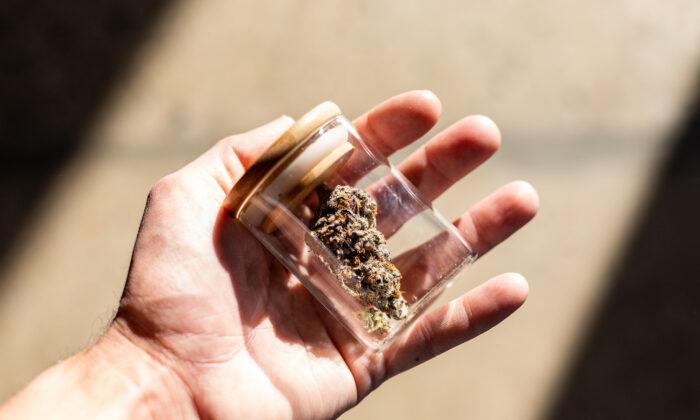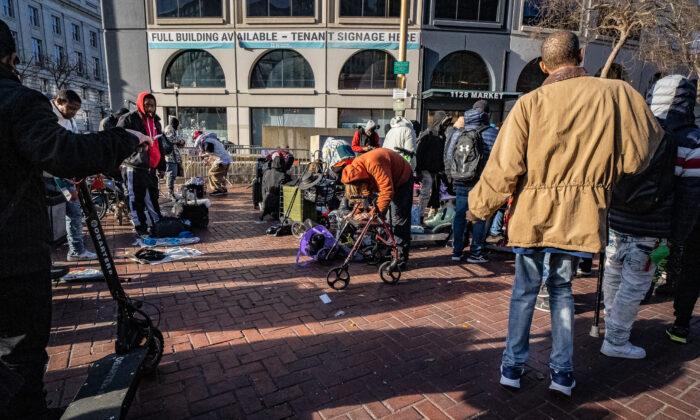When Proposition 64 was passed in 2016 and legalized recreational marijuana use, many Californians celebrated. But five years later, cannabis business leaders are sounding the alarm on taxes hampering the industry, and experts say illegal marijuana grows ran by drug cartels are popping up across the state.
“These trespass[ing] illegal cannabis growers, a majority of them being from cartel groups out of Mexico, are all over California,” Ret. Spec Ops Lt. John Nores Jr. told The Epoch Times. “The problem was how we regulated.”
Proposition 64 allowed adults 21 and over to purchase and possess marijuana for recreational use. Previously, only medical marijuana was legal, but the illegal trade was flourishing. With the new law came new taxes: one levied on cultivation and the other on retail sales.
Customers pay an 8.5 percent sales tax on recreational marijuana, not medical, while retailers pay a 15 percent excise tax when purchasing from distributors.
As of Jan. 1, the California Tax and Fee Administration raised the cultivation tax by 5 percent to $161 per pound. But a pound no longer sells for $1,200. The price dropped to $300, but the tax remains the same.
Proponents also promised to allocate revenue from the taxes toward youth programs, treatment, enforcement, research, and preventing damage to the environment caused by illegal marijuana operations. Critics of the proposition say those programs didn’t come to fruition on a sustainable level.
Gov. Gavin Newsom said this week at a press conference unveiling the 2022 budget that his goal for the cannabis industry is to “look at tax policy to stabilize the market.”
“And at the same time, it is also my goal to get these municipalities to wake up to the opportunities to get rid of the illegal market, the illicit market, and provide support in a regulatory framework for the legal market,” he said.
While Prop. 64 legalized marijuana statewide, the law leaves it up to municipalities on whether they will allow retail marijuana transactions. As of 2021, an estimated 182 cities and 31 counties have permitted some form of legal marijuana business.
But the illicit market has continued to flourish. According to a study by Arcview Market Research and BDS Analytic, illegal spending was $8.7 billion in 2019.
Mike Moussalli, CEO of Se7enLeaf, a cannabis manufacturing and distributing company in Costa Mesa, said the illicit market has “a huge dominating presence,” and he estimated its share at nearly 80 percent of the overall market of cannabis in California.
“The taxation and cost of doing business for legal cannabis is extremely high,” he told The Epoch Times in a previous interview. “Essentially, that cost gets passed along to the consumer. And at the end of the day, a consumer’s like, ‘Well, why am I paying 35 percent more for a product when I can just buy it over here?’”
Nores co-developed the Marijuana Enforcement Team within the California Dept. of Fish and Wildlife in 2013. His team identifies illegal cannabis grows across the state and aids law enforcement in bringing them down. With over 25 years of investigating environmental crime and wildlife resource destruction, Nores said cartels put toxic poisons into illegal marijuana grows that harm the environment and end up in waterways.
“Unfortunately, when Prop. 64 was enacted, it was kind of heartbreaking because illegal cannabis production now went down to a misdemeanor from a felony and went from a misdemeanor to an infraction for a juvenile grower,” Nores said.
He said reducing the sentencing devalues crime, which in turn, attracts more illegal growers. To fix the problem of Prop. 64, he said, lawmakers would need to reverse the reduction of the sentences.
“So, when you make it a misdemeanor, and cannabis is now regulated in the state of California, you don’t have a lot of incentive to prosecute those cases,” he said.
The cartel-run illicit farms come with its dangers. Cartels are often armed and violent. The cartels will also steal water for both their indoor and outdoor marijuana farms, he said, affecting residents in the area who already suffer water shortages due to drought regulations. One of the largest marijuana busts occurred in the Antelope Valley last year, where law enforcement officials searched more than 200 locations and seized approximately 375,000 illegal unregulated marijuana plants worth $1 billion.
“There’s so much violence, and how much human trafficking, and how much forced labor are inside these gross sites within these cartel groups, and it’s mind blowing,” Nores said. “And [it’s] because we don’t have a strong deterrence to keep them from doing an easy black-market profit.”
A report in the police journal Behind the Badge in 2018 detailed efforts made by the Anaheim Police Department to starve illegal dispensaries—first by cutting electricity and later by red-tagging entrances, making it a misdemeanor to go inside.
“Despite their best efforts, APD officers and city officials say illegal dispensaries keep popping up like mushrooms in Anaheim—even after the businesses have been red-tagged,” the report noted.
Last summer, Bob Groesbeck, co-CEO of Planet 13 Dispensary, opened the largest cannabis store in California in Santa Ana. Even though his superstore has over 16,000 square feet of retail space, he told The Epoch Times at the time his biggest competitors would be illegal operators.
“That’s who we’re fighting against every day. They’re producing product, selling it, and they pay no taxes. They pay substandard wages to their employees, and they’re not accountable,” Groesbeck told said. “They should be shut down immediately … because they’re playing by a different set of rules.”





